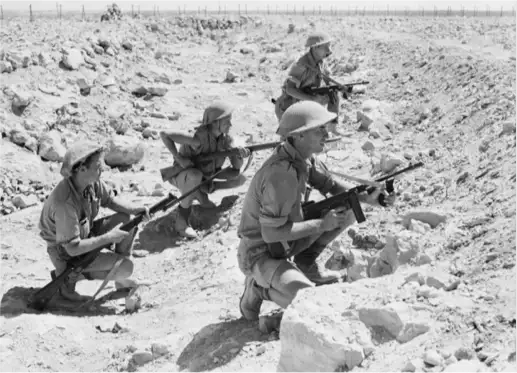Brush To Battlefield: The Siege of Tobruk – Ronald Suter
Commission Spotlight on the 2nd/12th Infantry Battalion
At No Man’s Land Studio, we are passionate about the stories behind the models we create, and this project has been particularly special. A client from Australia commissioned a large force inspired by the Battle of Tobruk, with a deeply personal connection to history. The army pays homage to the 2/12th Infantry Battalion, a key part of the Australian forces that held the line during the gruelling siege. Adding to the significance, the client’s friend’s grandfather, Ronald Suter, served in the same theatre as a sapper with the 2/1 Field Company, Royal Australian Engineers, directly supporting the infantry units with demolitions, defences, and front-line duties throughout the siege.
According to my client, Ronald never spoke about his war experiences much. All the family had was his service records, which I offered to read through and provide a bit of context and background to Ronald’s war and to share my findings.
Born in 1917, Ronald enlisted in 1939 at the outbreak of the Second World War. Like many young men of his generation, he answered the call to serve his country, embarking on a journey that took him from Australia to the North African deserts and the legendary siege of Tobruk. This project not only brings historical forces to life on the tabletop but also honours the memory of those who fought with resilience and courage in one of history's most iconic battles.
Serving with the 2/1 Field Company, Royal Australian Engineers, Ronald arrived in Libya in early 1941 as part of the 6th Division’s push against Axis forces. His unit played a critical role in constructing defensive positions, laying mines, and blowing up key infrastructure to delay enemy advances. Sappers were often the first in and the last out — building the positions others would hold, and destroying them when forced to retreat.
This first installment in the series focuses on the essential support elements:
Vickers MMG: A stalwart of the defence, delivering reliable firepower.
3-inch Mortar: Adding indirect fire to suppress enemy advances.
6-pounder and 2-pounder Anti-Tank Guns: Crucial for holding back enemy armour during the desert battles.
All these models are from the excellent Bolt Action range by Warlord Games. To help keep things moving, our new team member Dean has been busy constructing the tanks while I focus on painting the infantry and weapons. It’s been a pleasure collaborating as we bring this piece of history to life.
Conditions inside Tobruk were harsh. The desert wind kicked up dust that clung to skin, gear, and lungs. The men dug deep positions in rocky ground, lived under near-constant artillery fire, and worked by night to avoid the Stukas that scoured the sky by day. Ronald and his fellow engineers not only had to maintain the defences, but also fought as infantry when needed. It was here that the Australians earned the nickname “The Rats of Tobruk,” defying German General Rommel’s expectations by holding the port for over eight months. That same resilience would carry Ronald across the sea to another desperate defence — this time to Greece and then the hills of Crete.
This is just the beginning of a larger series covering the full force. In the next articles, we’ll dive deeper into the infantry units, tanks, and the overall look and feel of the army.
For those interested in the history behind the Battle of Tobruk and the courageous stand of the Australian forces, we’ll be posting a detailed historical article in our members' area soon. Be sure to join as a member to explore the fascinating story behind this project!













